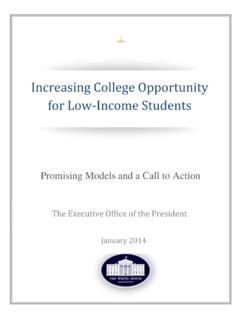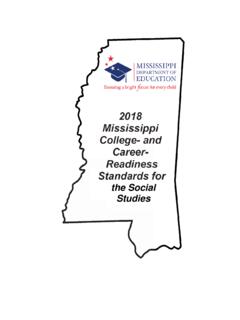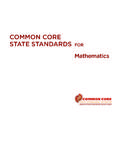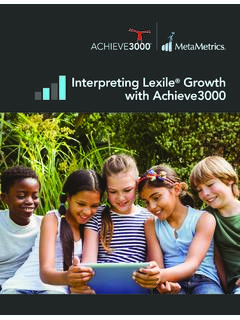Transcription of Transitions from High School to College - ed
1 Transitions from high School to College Transitions from high School to College Andrea Venezia and Laura Jaeger Summary The vast majority of high School students aspire to some kind of postsecondary education, yet far too many of them enter College without the basic content knowledge, skills, or habits of mind they need to succeed. Andrea Venezia and Laura Jaeger look at the state of College readiness among high School students, the effectiveness of programs in place to help them transition to College , and efforts to improve those Transitions . Students are unprepared for postsecondary coursework for many reasons, the authors write, including differences between what high schools teach and what colleges expect, as well as large disparities between the instruction offered by high schools with high concentrations of students in poverty and that offered by high schools with more advantaged students.
2 The authors also note the importance of noncurricular variables, such as peer in uences, parental expectations, and conditions that encourage academic study. Interventions to improve College readiness offer a variety of services, from academic prepara- tion and information about College and nancial aid, to psychosocial and behavioral supports, to the development of habits of mind including organizational skills, anticipation, persistence, and resiliency. The authors also discuss more systemic programs, such as Middle College high Schools, and review efforts to allow high School students to take College classes (known as dual enrollment).
3 Evaluations of the effectiveness of these efforts are limited, but the authors report that studies of precollege support programs generally show small impacts, while the more sys- temic programs show mixed results. Dual-enrollment programs show promise, but the evalua- tion designs may overstate the results. The Common Core State Standards, a voluntary set of goals and expectations in English and math adopted by most states, offer the potential to improve College and career readiness , the authors write. But that potential will be realized, they add, only if the standards are supple- mented with the necessary professional development to enable educators to help all students meet academic College readiness standards, a focus on developing strong noncognitive knowl- edge and skills for all students, and the information and supports to help students prepare and select the most appropriate postsecondary institution.
4 Andrea Venezia is a senior research associate for WestEd's Regional Educational Laboratory West in San Francisco. Laura Jaeger is a research associate at WestEd in San Francisco. VOL. 23 / NO. 1 / S PR ING 2013 117. Andrea Venezia and Laura Jaeger A. s Sandy Baum, Charles Kurose, Early Assessment Program, and statewide and Michael McPherson default curricula. Finally, it describes the discuss in their article in this Common Core State Standards movement issue, the postsecondary educa- and concludes with a discussion of both the tion landscape in the United need for more comprehensive and systemic States has changed dramatically over the past reforms and the challenges related to imple- The aspirations and actions of menting them.
5 The vast majority of high School students have shifted, with greater percentages of students Understanding the Problem intending to complete some form of postsec- In recent years, roughly 3 million students ondary education. For example, from 1980 to have been graduating from high schools 2002, the share of tenth graders who aspired annually. According to the National Center to earn at least a bachelor's degree rose from for Educational Statistics, more than 41 percent to 80 percent, with the largest million students graduated from increase coming from low-income high schools in 2008, the last year for which Unfortunately, far too many students enter data are A key question is, how College without the basic content knowledge, many of these students are prepared for skills, or habits of mind needed to perform College -level work?
6 College -level work successfully. As College - going rates increase, the limitations of the College readiness is commonly understood traditional and current structures, programs, as the level of preparation a student needs to and practices designed to promote student enroll and succeed in a College program (cer- success within both secondary and postsec- ti cate, associate's degree, or baccalaureate). ondary education systems and institutions without requiring While there become more visible. is no precise way of knowing how many high School graduates meet this standard, the This chapter discusses Transitions from high largest nationally representative and continu- School to College and some of the major ing assessment of what America's students efforts under way in states and schools to know and can do in various subject areas.
7 Improve College preparation. It begins with the National Assessment of Educational an overview of the problem, including esti- Progress (NAEP) suggests that many mates of the number of high School graduates students are likely falling short. The NAEP. who are not ready for College and the major determines students' achievement level . reasons why they are not. The chapter then basic, pro cient, or advanced based on explores whether current conceptions of input from a broadly representative panel of College readiness are adequate and also what teachers, education specialists, and members it means for students to nd the right col- of the general public.
8 Students determined to lege t. Next, it reviews some of the major be pro cient or advanced have demonstrated interventions designed to improve College a competency over challenging subject readiness , particularly among low-income matter that would be expected of entering students: the federal TRIO programs, the College students, including subject-matter Early College high School (ECHS) and knowledge, application of such knowledge Middle College high School (MCHS) initia- to real-world situations, and analytical skills tives, dual-enrollment programs, California's appropriate to the subject matter. In 2009, 1 18 T H E F UT UR E OF C HI LDRE N.
9 Transitions from high School to College only 38 percent of twelfth-grade students rote memorization of algorithms, rather than performed at or above the pro cient level engaging students in problem-solving and on NAEP's reading assessment; even fewer, critical-writing exercises that develop both 26 percent, were at or above the pro cient deeper knowledge of the content and the level in more general logical and analytical think- ing skills valued at the postsecondary Other common assessments used to deter- Most public high schools offer at least one mine College readiness are the ACT and Advance Placement (AP) or, less commonly, SAT exams, which are typically adminis- one International Baccalaureate (IB) course.
10 Tered to high School juniors and seniors. In These courses are designed to be more rigor- 2012, only 25 percent of all ACT-tested high ous than a standard high School course and School graduates met the College readiness to foster the critical thinking skills expected Benchmarks in all four subjects, meaning of College students. That said, the College that they earned the minimum score needed Board, which administers the AP program, to have a 50 percent chance of obtaining a reports that only 30 percent of 2011 public B or higher in corresponding rst-year high School graduates participated in AP. College courses. Fifty-two percent of gradu- courses and only percent succeeded in ates met the ACT's reading benchmark , scoring 3 or higher ( quali ed to receive 46 percent met the mathematics benchmark , College credit or placement into advanced and 67 percent met the English benchmark .)














